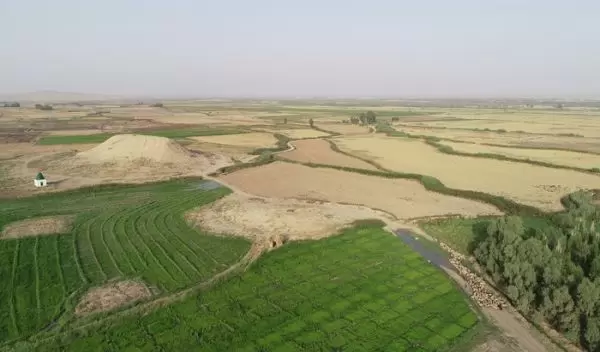
Ancient discovery reveals new knowledge of early Mesopotamian farming
Researchers have unearthed the earliest definitive evidence of broomcorn millet, Panicum miliaceum, in Mesopotamia -- a territory that roughly coincides with present-day Iraq -- challenging the current understanding of humanity's earliest agricultural practices. The findings appear in the journal Scientific Reports. The research is funded in part by the U.S. National Science Foundation.
"The presence of millet in Mesopotamia during this earlier time period challenges the accepted narrative of agricultural development in the region, as well as our models of how ancient societies provisioned themselves," said Elise Laugier, an environmental archaeologist at Rutgers University.
Broomcorn millet is a quick-growing and versatile summer crop that was first domesticated in East Asia. The researchers analyzed microscopic plant remains, or phytoliths, from Khani Masi, a mid-late second millennium B.C. (1500 -- 1100 B.C.) site in the Kurdistan region of modern Iraq.
"The presence of this East Asian crop in Mesopotamia highlights the interconnected nature of Eurasia during this time, contributing to our knowledge of early food globalization," Laugier said. "The discovery of millet and thus the evidence of cultivation practices also forces us to reconsider the capacity and resilience of the agricultural systems that sustained and provisioned Mesopotamia's early cities, states and empires."
The discovery of broomcorn millet in ancient Mesopotamia was surprising for environmental and historical reasons. Until now, researchers thought millet wasn't grown in Mesopotamia until the construction of later first millennium B.C. imperial irrigation systems. Millet generally requires summer precipitation to grow, but Southwest Asia has a wet winter and dry summer climate, and agricultural production is based almost entirely on crops grown during the winter, such as wheat and barley.
The researchers' new evidence that crops and food were in fact grown in summer months means that previous studies likely under-appreciated the capacities and resilience of ancient agricultural food-system societies in semi-arid ecosystems.
The study adds to archaeological research showing that in the past, agricultural innovation was a local initiative, adopted as part of local diversification strategies before such strategies were used regionally, the scientists said. This new information provides insights into how agricultural innovations are spread.


